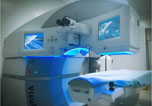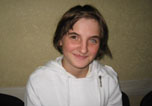- Over 55,000 LASIK and cataract procedures (including on over 4,000 doctors)
- The FIRST center in TN to offer Laser Cataract Surgery
- Introduced bladeless all-laser LASIK to the state
- Implanted the state's first FOREVER YOUNG™ Lens
- The first surgeons in the US to perform a new Intacs surgery to treat keratoconus
- Helped patients from 40 states and 55 countries
- International referral center for cataract surgery and LASIK complications
- Read Dr. Wang's book: LASIK Vision Correction
Why did you decide to have LASIK? Why did you choose Dr. Wang? How has your life changed since your LASIK procedure?
What is your advice for people considering LASIK?
Click to read more
| Home | Print This Page |
Reduction in corneal haze and apoptosis by amniotic membrane matrix in excimer laser photoablation in rabbits
Presented in part at the annual meeting of the Association for Research in Vision and Ophthalmology, Ft. Lauderdale, Florida, USA, May 1997.
Ming X Wang, MD, PhDa , Trevor B Gray, MDb, Woo Chan Park, MDb, Pinnita Prabhasawat, MDb, William Culbertson, MDb, Richard Forster, MDb, Khalil Hanna, MDb, Scheffer C.G Tseng, MD, PhD1b
Accepted 5 April 2000.
Abstract
Purpose
To determine whether preserved human amniotic membrane can reduce corneal haze and keratocyte apoptosis induced by excimer laser photoablation in rabbit corneas.
Methods
Excimer photoablation was performed bilaterally in 30 rabbits with a 6.0 mm ablation zone and 120 μm depth using the VISX Star laser with the phototherapeutic keratectomy (PTK) mode. One eye was randomly covered by preserved human amniotic membrane secured with 4 interrupted 10-0 nylon sutures, and the other eye served as the control. The amniotic membranes were removed at 1 week, and corneal haze was graded with slitlamp biomicroscopy by 3 masked corneal specialists biweekly for the ensuing 12 weeks until the rabbits were killed. Another 18 rabbits were divided into 4 subgroups and received PTK alone, PTK with membrane, PTK with sham sutures, or PTK with tarsorrhaphy. All eyes were studied histologically, and 3 eyes in each group were studied by in situ terminal deoxynucleotidyl transferase deoxy-UTP-nick end labeling assay at 1, 3, and 7 days and 12 weeks, respectively.
Results
A consistent grading of differences in corneal haze scoring between the control corneas and the amniotic-membrane-covered corneas was noted among the 3 masked observers. Organized reticular post-PTK corneal haze peaked at 7 weeks in both groups, and the corneal haze score in the amniotic-membrane-covered group was significantly less than in the control group from 7 to 12 weeks (all P < .001). Compared to the control corneas, the amniotic-membrane-covered corneas had less inflammatory response at 1 and 3 days, less keratocyte apoptosis in the ablated anterior corneal stroma at 1, 3, and 7 days (P < .001), and less stromal fibroblast cellularity and epithelial hyperplasia at 12 weeks.
Conclusions
Amniotic membrane matrix introduced at an early stage of the corneal wound healing process effectively reduced corneal haze induced by excimer laser photoablation in rabbits. Studies linking suppression of apoptosis in the acute wound-healing process with reduction of subsequent corneal scarring may have useful clinical applications.
a Vanderbilt Laser Sight Center and Department of Ophthalmology and Visual Sciences, Vanderbilt University School of Medicine, Nashville, Tennessee, USA (Wang)
b Ocular Surface and Tear Center, Cornea Service, Bascom Palmer Eye Institute, University of Miami School of Medicine, Miami, Florida, USA; (Gray, Park, Prabhasawat, Culbertson, Forster, Hanna, Tseng)
Reprint requests to Ming X. Wang, MD, Vanderbilt Laser Sight Center and Department of Ophthalmology and Visual Sciences, Vanderbilt University School of Medicine, 8030 MCE, Nashville, Tennessee 37232-8808, USA
Supported in part by the National Institutes of Health Grant #EY 10900, the Joe C. Davis Foundation, an unrestricted grant from Research to Prevent Blindness, Inc., the Burroughs Wellcome Fund, the University Research Council of Vanderbilt University, the Skin Disease Research Center, and the Vanderbilt-Ingram Cancer Center.
2 Xiong Ma, Eleut Hernandez, Fei-Ying Ding, Olga Sanabria, and the photography service at Bascom Palmer Eye Institute provided technical support.
1 Dr. Tseng has filed a patent with the U.S. Patent Office.
PII: S0886-3350(00)00467-3
© 2001 ASCRS and ESCRS. Published by Elsevier Inc. All rights reserved.
Our new texbooks
A 501c(3) charity that has helped patients from over 40 states in the US and 55 countries, with all sight restoration surgeries performed free-of-charge.




















